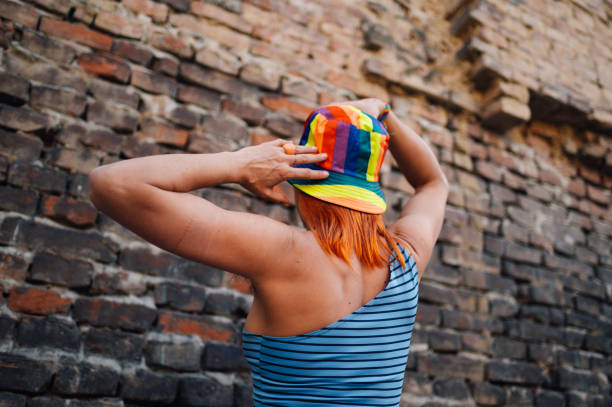
Gender-fluid fashion is the art of wearing clothes without being confined by traditional male or female labels. It allows people to explore identity freely using style as their canvas.
This concept doesn`t erase gender but opens fashion to everyone. Individuals mix elements from different styles to create personalized and authentic looks that suit their mood and identity.
Gender-fluid fashion is not new, but it’s gaining visibility. Social media, progressive brands, and influential voices help normalize it and make it more accessible to the masses.
Clothing is deeply personal. It’s the first thing people see and a powerful tool for communication. Gender-fluid fashion amplifies that message by rejecting societal expectations.
When people wear what they feel comfortable in, it reflects their inner world. This kind of authenticity promotes confidence, visibility, and a sense of self-worth.
Fluid fashion allows wearers to express moods, beliefs, or aesthetics. They can be masculine one day, feminine the next, or both at once, without restrictions.
Gender-neutral fashion isn’t just a modern idea. Throughout history, many cultures embraced androgynous clothing that defied strict binaries, showing this isn’t a new concept.
From robes in ancient Asia to unisex tunics in early Europe, garments were practical and fluid. Fashion only became gendered during more recent industrial times.
The 20th century saw figures like Marlene Dietrich and David Bowie challenge style norms, paving the way for today’s fluid expression in fashion.
Gender-fluid pieces often feature versatile cuts, adjustable fits, and neutral tones. But they also embrace bold colors, oversized silhouettes, and unexpected combinations.
The absence of gender-specific tailoring is key. Designers create pieces that adapt to many body types without emphasizing traditional male or female features.
Textures, layers, and accessories help customize each outfit. Individuals build unique looks by combining softness, structure, or dramatic flair in new and personal ways.
Retail spaces are slowly catching up with gender-fluid demand. Forward-thinking stores and brands now offer unisex sections or remove gender labels altogether.
This shift gives shoppers the freedom to explore without being boxed in. It`s empowering and allows experimentation without judgment or awkward experiences.
Some digital brands go further, offering filters based on style rather than gender. This new retail model supports authenticity and challenges outdated merchandising systems.
Influencers help normalize gender-fluid fashion. By sharing personal style journeys, they inspire audiences to explore their own identities through clothing choices.
These creators mix fashion with activism. They use platforms to highlight fluid expression, celebrate uniqueness, and dismantle harmful stereotypes.
Their content promotes acceptance and visibility, especially for younger audiences seeking community and confidence in their expression.
Major fashion weeks are increasingly spotlighting non-binary and fluid collections. Designers use runways to explore themes of identity, freedom, and equality.
These shows often break traditions with mixed-gender casting and imaginative collections that blur boundaries. It redefines what high fashion can look like.
By rejecting male and female categories, runways become inclusive spaces. They mirror society’s evolution and help inspire change within the broader industry.
Established brands are responding by updating their lines. Some release gender-neutral collections, while others rework classic pieces to suit a broader range of wearers.
This shift isn’t just trendy—it’s necessary. Young consumers demand inclusivity, and brands must evolve or risk becoming irrelevant in a more fluid marketplace.
Some collaborations with gender-fluid designers show how old institutions can innovate when they listen to the voices shaping modern identity.
Start with basics like oversized tees, relaxed trousers, and neutral tones. These items serve as building blocks for many gender-fluid looks.
Layering is your friend. Use vests, jackets, and scarves to add texture and flair. Play with silhouettes and proportions to express personality.
Shoes and accessories elevate fluid looks. Choose footwear and jewelry based on style, not gender. Trust your instincts and have fun with experimentation.
Gender-fluid fashion highlights the broader diversity within style. It acknowledges every body, identity, and expression as valid and worthy of representation.
It fosters community and understanding. Seeing different people celebrated helps challenge internalized ideas of what’s “acceptable” or “normal” to wear.
Fashion becomes a platform for equality, pushing beyond tokenism to genuine inclusion and acceptance in design, marketing, and culture.
Despite progress, misconceptions remain. Some assume gender-fluid fashion is only for certain identities, but it’s open to all who seek self-expression.
Retail limitations, societal bias, and lack of representation still hinder widespread acceptance. Education and visibility help overcome these hurdles.
The goal is not to replace traditional fashion but to expand its possibilities. Everyone deserves the freedom to dress how they feel without fear or judgment.
The future of fashion is inclusive, diverse, and boundary-free. As culture evolves, gender-fluid style will become more normalized and widely embraced.
Technology and customization will play a role. Virtual try-ons, AI-driven styling, and personalized collections will further break down barriers.
Ultimately, fluid fashion represents freedom. It empowers people to choose clothing that aligns with identity, mood, or moment—not outdated expectations.
This post has been authored and published by one of our premium contributors, who are experts in their fields. They bring high-quality, well-researched content that adds significant value to our platform.






